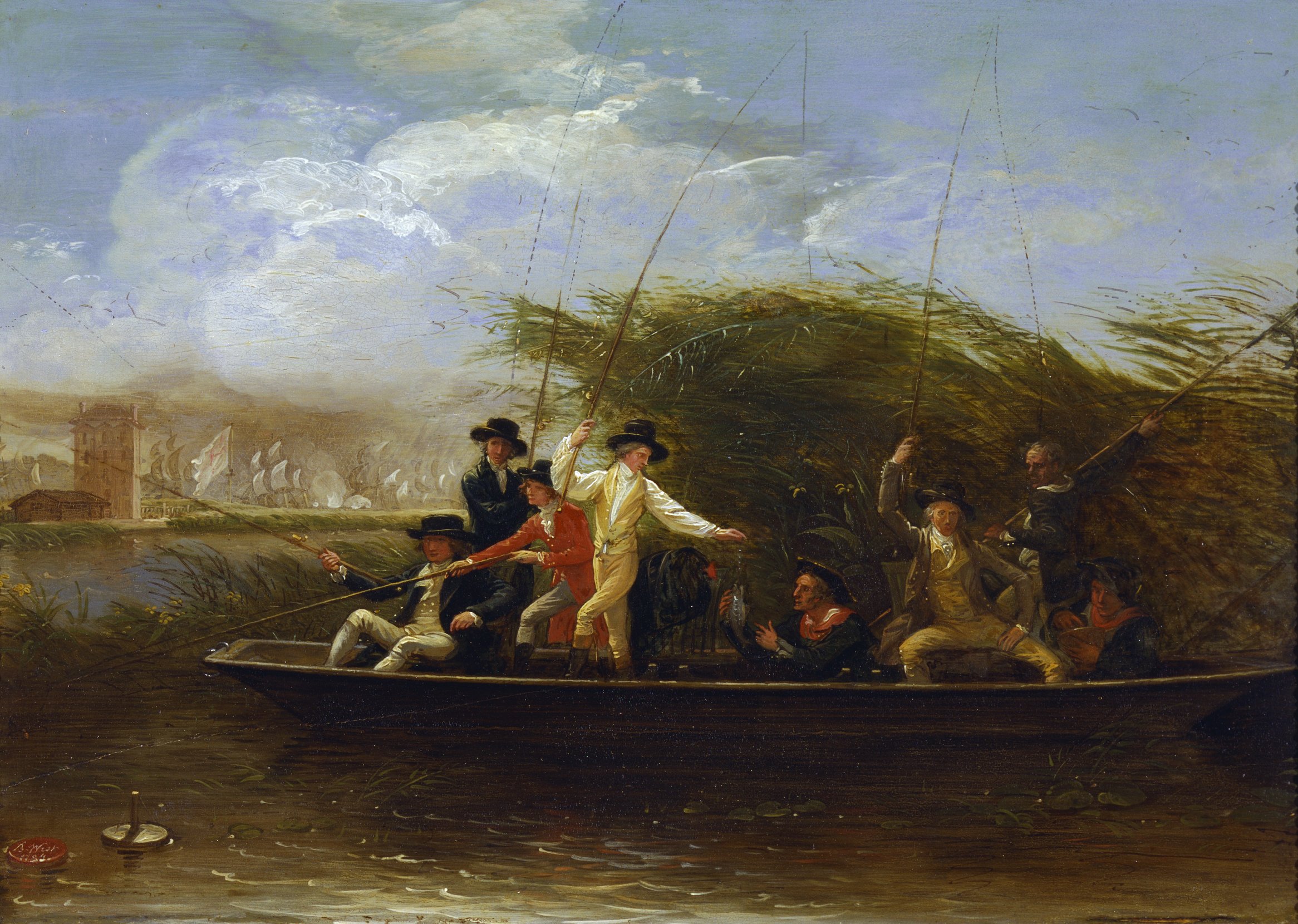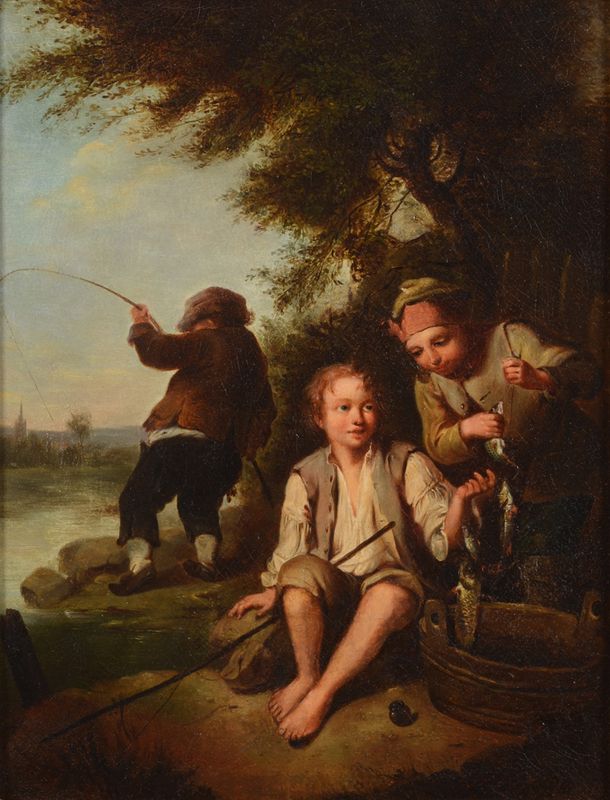There are ads in the 18th century for surprisingly sophisticated fishing tackle.
The Pennsylvania Gazette
The Pennsylvania Packet
April 15, 1776
FISHING TACKLE of all sorts, for use of either SEA or RIVER, MADE AND SOLD BY EDWARD POLE, In Market street, near the Court house, Philadelphia, viz.
RED cedar, hazel, dogwood, &c. fishing rods. for fly, trolling and bottom fishing; 6, 8, 10 and 12 stave pocket reels, furnished with lines, &c. trolling wheels for rock, trout or pearch, with or without mutlipliers; bottom or layout, and sea lines, cable laid, from large dolphin down to whiting, with hooks suitable from bonettar to the smallest size; best green or white hair, silk, hardest hempen, flaxen and cotton lines, for angling, trolling, deepseas and other fishing; trimmers, and man of war trimmers, and snap hooks, with or without springs, for pike fishing; a variety of cork floats of all sizes; artificial flies, moths and hackles, with suitable lines of any length; silk worms gut, in knots and quarter knots; best Indian grass; salmon, rock, jack, trout and pearch, box and plain swivels; deepseas, with or without swivels for river fishing; leads made of various patterns, for the use of Black Point, and all other fishing; all sorts and sizes of best kerby and common fish hooks, ready hung on silk, hair, silk worms gut, grass, or Indian weed; all sorts and sizes of hooks, without snooding; the best kind of fish hooks, of various sizes, made at Philadelphia; small portable boxes, completely furnished with a variety of fishing tackle; casting, minnow, landing and scoop nets. All kinds of tackle mended at a short notice; shad, herring and pearch seines ready made."
"The Pennsylvania Gazette
August 30, 1764
Just imported in the Philadelphia Packet, Captain Budden, from London... 3 and 4 joint hazel, dogwood and bambus fishing rods, best Kirby hooks untied, best round and common hooks , 3 and 4 joint solid rods, 6, 8 and 10 stave reels of fishing lines, flies on gut, best and common hair lines, ditto with Kirby hooks , best silk ditto, common and best Kirby hooks tied,"
THE SOUTH CAROLINA GAZETTE; AND COUNTRY JOURNAL
April 18, 1769
JAMES M'CALL,Has imported in the Friendship,
CHARLES-TOWN
...bag and other fishing rods, some with 11 joints, artificial flies, tackle books, Kirby's hooks , hemp, cotton, and silk lines, floats and reels, paper of all sorts,
"The Pennsylvania Packet
May 20, 1778
FISHING TACKLE, Of all sorts, for use of either sea or river, made and sold, wholesale and retail, by EDWARD POLE , At Burlington, in the State of New Jersey, viz.
HOLLOW and solid fishing rods, of every kind; best kerby and common fish hooks, of all sizes; 6, 8, 10 and 12 stave pocket reels; hair, silk and hemp, fly, angling and trolling lines, of every kind; together with every other article in the Fishing way, making a compleat assortment."
Spence








